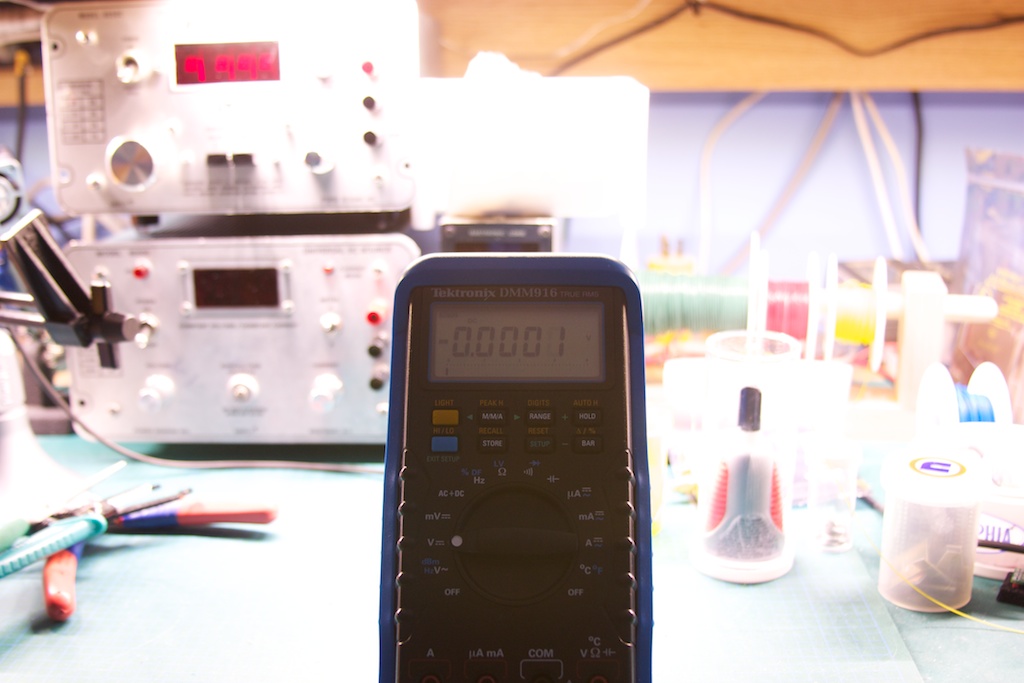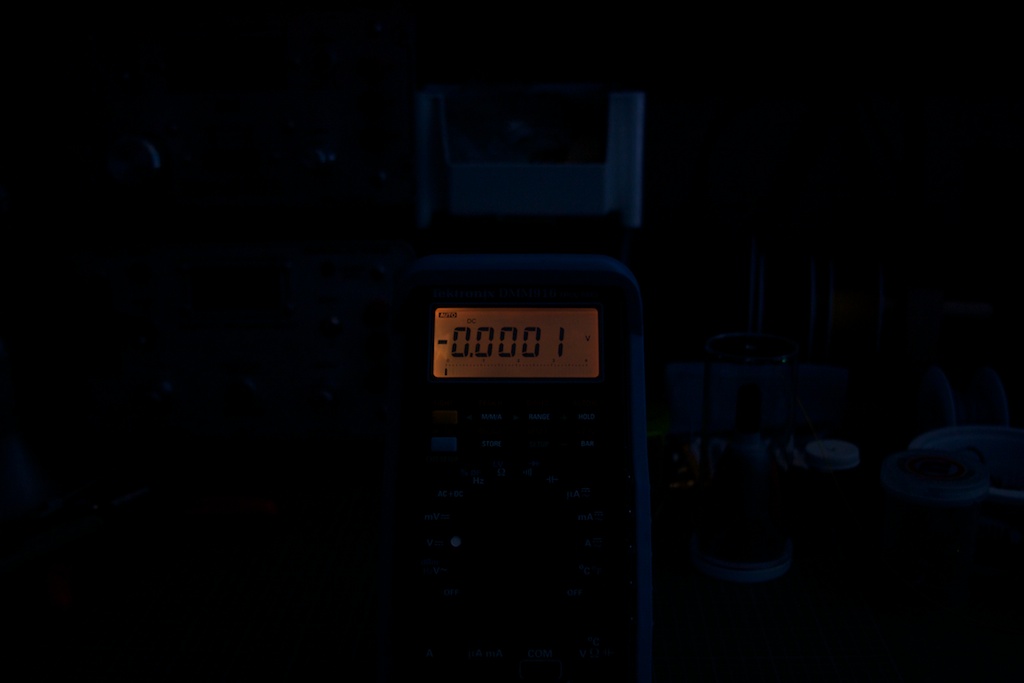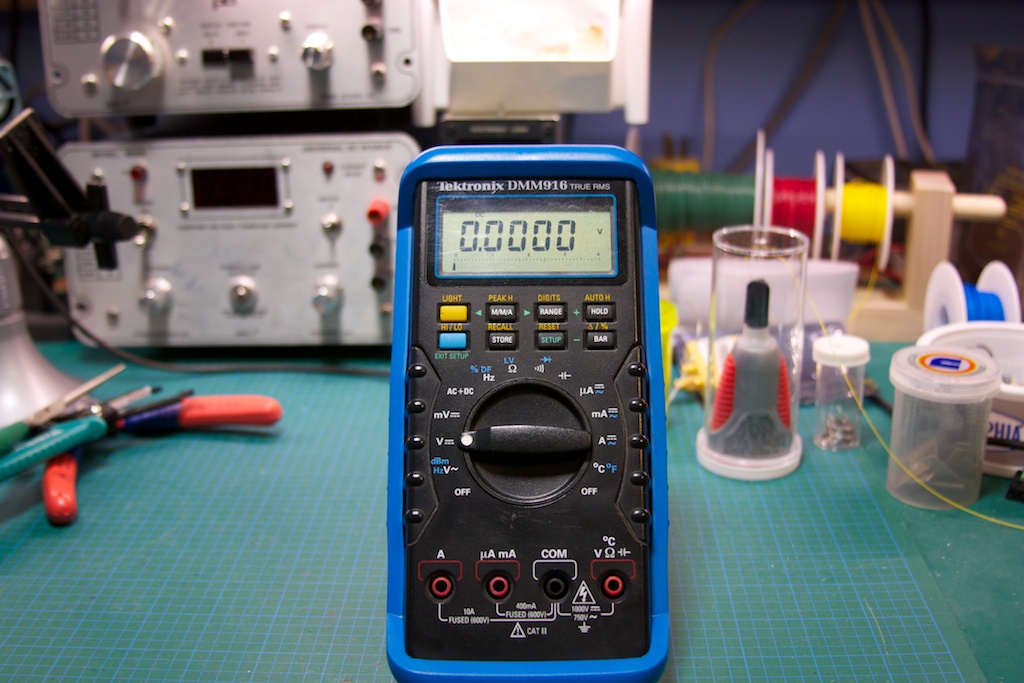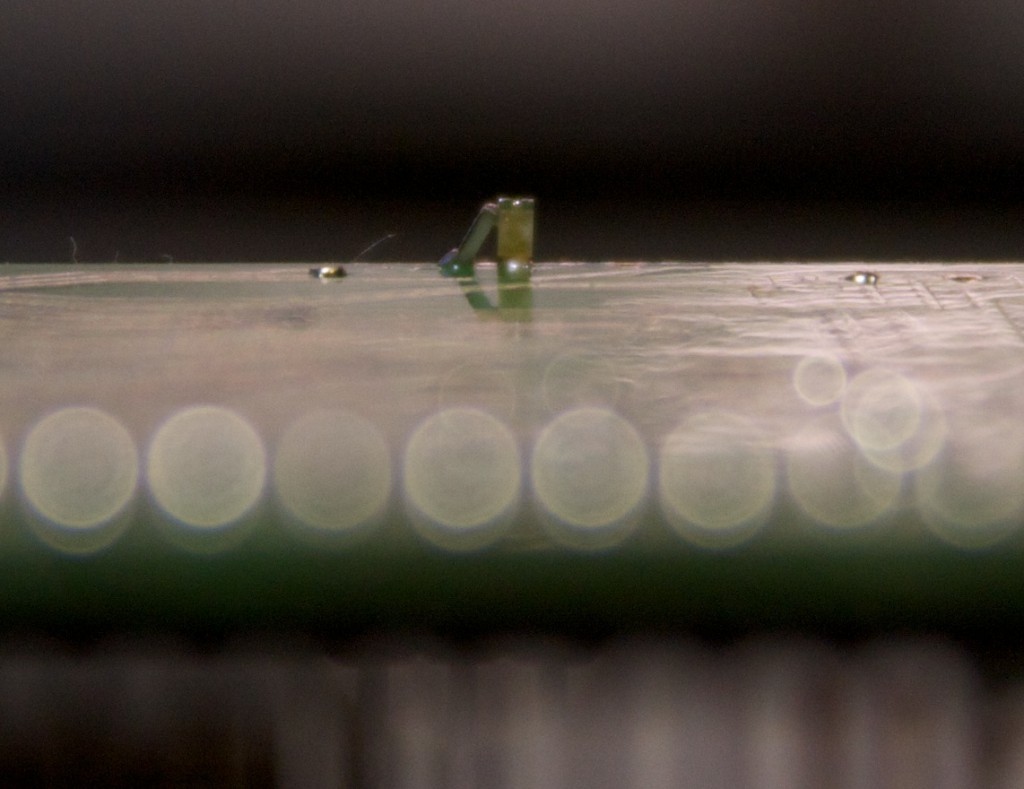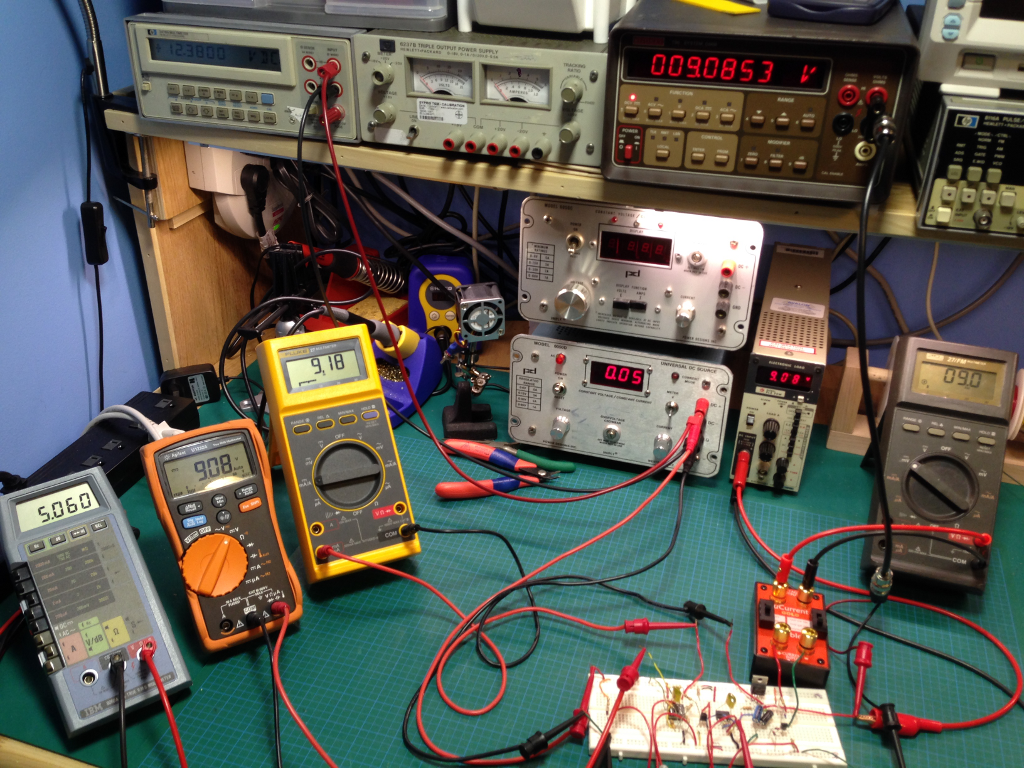After spending both a bit of time and money, I have assembled a set of tools both new and used to help me on my path to learning a bit about electronics. This first post will be about the most basic of tools for any individual that is interested in electronics, the multimeter.
Agilent U1232A
Originally I was going to buy 2 meters, one high quality one for my primary meter and a secondary one for measuring simultaneous current or an additional voltage. To this end I purchased an Agilent U1232A (6000 count, basic DC accuracy of 0.5% + 2 counts) to use as my primary calibrated meter. I bought it at Active Tech for 150$ + shipping, and it came with a certificate of calibration. This was important to me so I would have some confidence when I test any other meters against it to see if they are calibrated. I have attached 3 shots of the meter measuring 100 ohm, 1K ohm and 10K ohm resistors (0.1%):
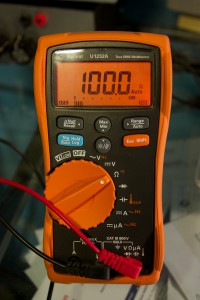
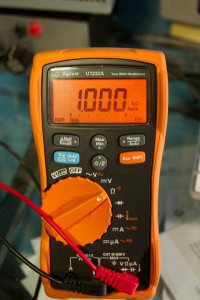
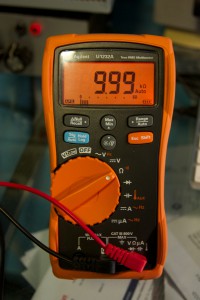
Hewlett Packard 3478A
The second meter I picked up on Ebay for ~100$ + shipping. I was originally going to try and find another decent hand-held meter, but after seeing a review of the HP 3478A, I decided that I wanted to get a high-precision 5 1/2 digit (30000 count!) bench top meter. It can be found cheaper (I have seen it listed for 60$, but the auctions usually finish higher) but I figure if you can pick this bad boy up for less than 200$ shipping in, you’re doing good. This meter is old but an excellent purchase as the accuracy (as far as I can measure and test) is spot-on when compared against the Aglient meter. The basic DC accuracy of this meter is +/- 0.02% + 2 counts. Again, I have attached some shots of the HP meter measuring the same resistors as above:
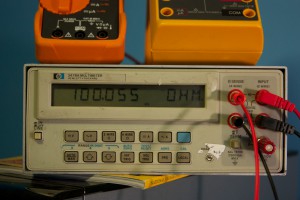
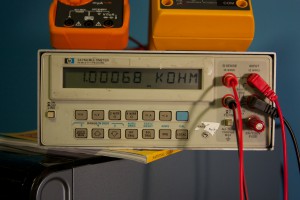
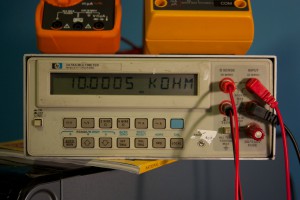
You will note that I used the 4-wire measurement function of this meter to measure these resistors. This allows the meter to remove any resistance from the test leads themselves (which ended up about a 2.5% error). Also, you may have noticed the “non-standard” test probe connector for the current measurement on the bottom right of the meter face: this was due to a the fuse holder/connector piece being missing (something I hadn’t noticed in the pictures of the meter on Ebay). I looked around, but even these HP meters being sold “for parts” were 100$+ and Agilent does not stock this part any more. I hacked on a binding post with a 3A fuse behind it and that solved that! So beware: when looking for this meter on Ebay or any other second-hand site, MAKE SURE you get the current socket + fuse holder!
Fluke 27/AN
The last meter that I picked up on Ebay is a Fluke 27/AN for ~70$ + shipping, although it can be found cheaper: I have seen them for as low as 50$ for this version. It is the “worst” of the three: a 3200 count instrument, +/- 0.1% + 1 count basic DC volts accuracy. So it is more accurate than my Agilent (in theory) but has less resolution than the Agilent. The reason I bought this meter was to have a nice solid, built like a tank meter that I would be confident enough to use with mains testing (if need be) and would be rugged enough to use outside the “lab” environment. It also has a 10A current range, which is handy (since the HP can only handle a maximum of 3A). With a rated 900 hour battery life, this meter is the one that I would trust to be working when I need it. Below are some shots of the same resistor measurements as above:
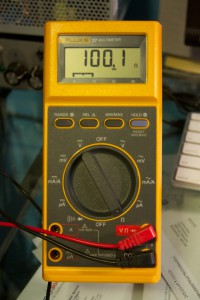
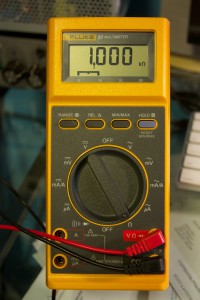
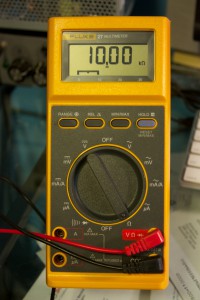
As a final test, here is a shot of all three meters connected to the same power source (DC voltage). As you can see, they are all almost exactly the same (of course the HP will have the most resolution, so we can ignore the least significant digits):
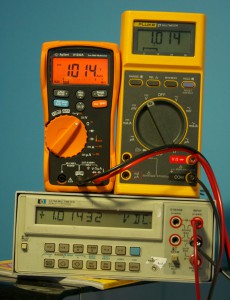
All in all, for a couple of second-hand meters, I am very pleased with the overall accuracy (assuming that the Agilent I have is reasonably well calibrated, since I am using it as a transfer standard). I do not have a meter that can measure temperature, so that might be the next thing to look for!
